Finding the right fabric can transform your daily comfort, especially if you have sensitive skin or conditions like eczema. Bamboo, Tencel, and merino wool rank among the softest and most skin-friendly fabric options due to their natural breathability, moisture-wicking properties, and hypoallergenic qualities.
Whether you’re dealing with atopic dermatitis, contact allergies, or simply want the gentlest materials against your skin, this comprehensive guide provides dermatologist-backed recommendations to help you make informed choices.
Table of Contents
Understanding Fabric and Skin Health
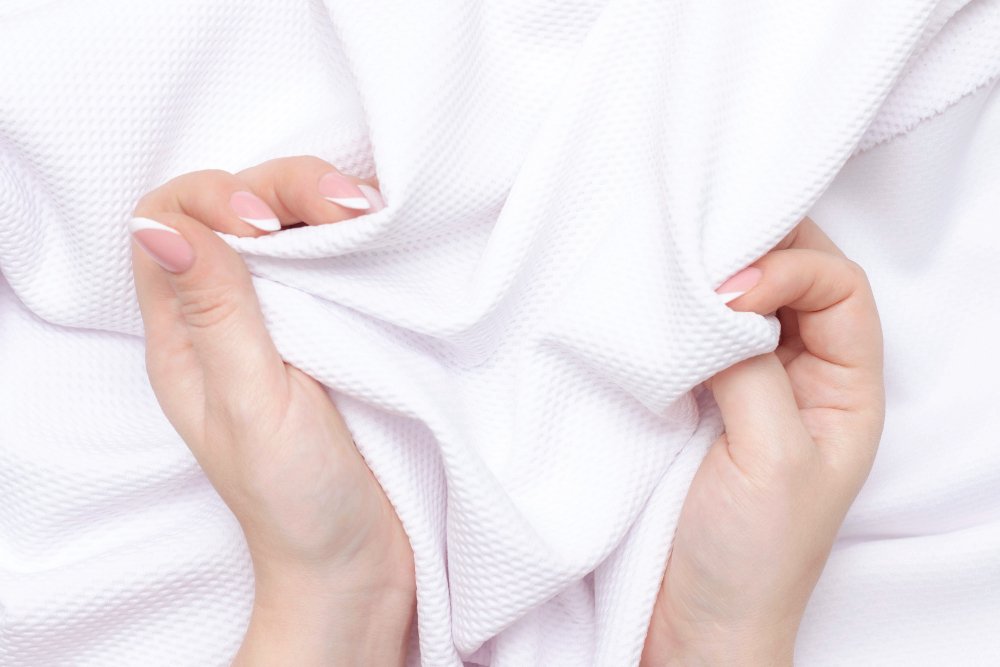
Your skin is your body’s largest organ, and what touches it directly affects your comfort and health. People with sensitive skin have compromised skin barriers, making them more susceptible to irritation, dryness, and infection from fabrics and their chemical treatments.
What Makes Skin Sensitive to Fabrics?
Several factors contribute to fabric-related skin irritation:
- Chemical treatments: Formaldehyde resins, dyes, and finishing agents
- Synthetic fibers: Materials that trap heat and moisture
- Rough textures: Fabrics that create friction against skin
- Poor breathability: Materials that don’t allow air circulation
Medical Conditions and Fabric Choices
Eczema and Atopic Dermatitis
Dermatologists specifically recommend certain fabrics for eczema management. Clinical research shows that cotton and silk have been traditionally recommended for patients with atopic dermatitis because of reported patient comfort, while newer synthetic fabrics combine antimicrobial and anti-inflammatory properties.
For eczema sufferers, fabric choice plays a crucial role in managing symptoms by helping keep skin cool, dry, and free from irritants. The National Eczema Association notes that 72% of eczema patients experience symptom relief when switching to hypoallergenic laundry products.
Medical experts recommend that people with eczema choose fabrics that are soft, breathable, and moisture-wicking to prevent symptom flare-ups. The dermatitis may worsen with constant rubbing by fabric against skin and by sweating in hot, humid environments.
Contact Dermatitis and Chemical Allergies
Textile contact dermatitis affects more people than you might think. Approximately 45% of the global population experiences sensitive skin conditions, making fabric selection increasingly important.
The most common chemical allergens in fabrics include:
- Formaldehyde resins (used for wrinkle-resistance)
- Para-phenylenediamine (PPD) (textile dyes)
- Azo and anthraquinone dispersal dyes
- Nickel (in metal fasteners)
According to dermatological research, textile contact dermatitis is more common in women than men, primarily due to more fitted and colorful clothing choices. The condition typically presents as delayed reactions such as redness, scaling, and itchiness, often worsening in hot and humid environments.
The Science Behind Soft Fabrics
Key Characteristics of Skin-Friendly Fabrics
- Breathability and Moisture Management Soft fabrics excel at allowing air circulation and managing moisture. This prevents the buildup of sweat and bacteria that can irritate sensitive skin.
- Smooth Fiber Structure The softest fabrics have fine, smooth fibers that minimize friction against skin. For example, merino wool fibers are about one-third the diameter of human hair, creating exceptional softness.
- Natural Antimicrobial Properties Some fabrics naturally resist bacteria growth. Bamboo fibers contain anions that help purify and calm the nervous system, while merino wool contains natural lanolin with antibacterial qualities.
Top Fabric Choices for Sensitive Skin
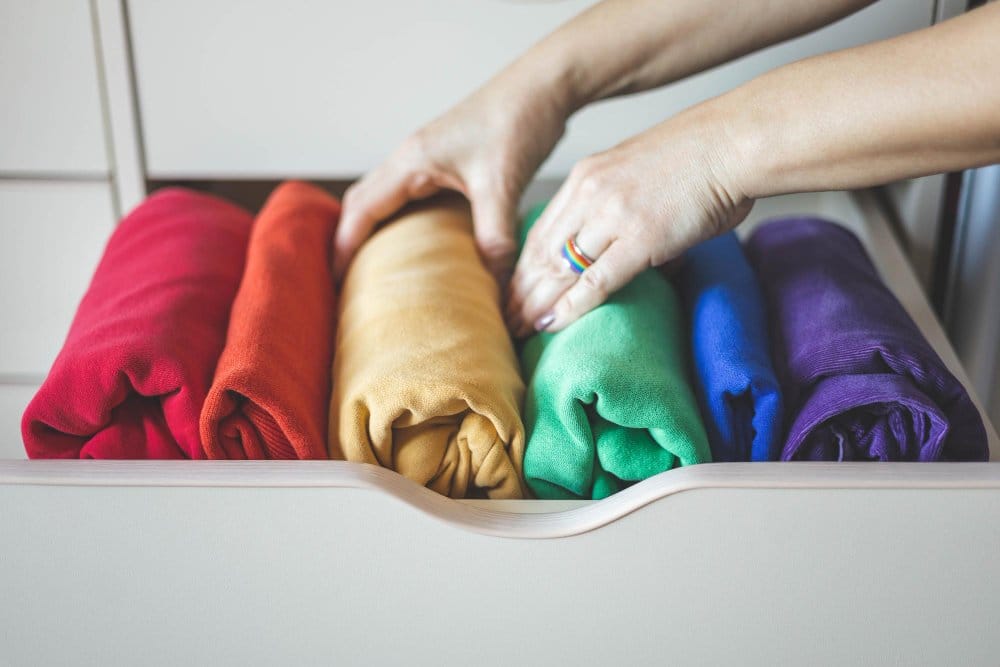
1. Cotton: The Gold Standard
What is the softest 100% cotton fabric? Organic cotton, particularly varieties like Pima and Egyptian cotton, represents the softest cotton options. Egyptian cotton gets softer with each wash as the longer fibers relax and become more supple.
Cotton remains dermatologists’ top recommendation because it:
- Allows excellent air circulation
- Absorbs moisture effectively
- Contains no harsh chemicals (when organic)
- Gets softer over time with proper care
Key varieties to look for:
- Organic cotton: Grown without pesticides or harsh chemicals
- Pima cotton: Extra-long staple fibers for superior softness
- Egyptian cotton: Long fibers that improve with washing
2. Bamboo: Nature’s Softness Champion
What fabric is soft and silky? Bamboo fabric delivers an incredibly soft, silk-like feel while offering superior moisture management. It’s naturally hypoallergenic and contains antimicrobial properties that help prevent skin irritation.
Bamboo excels because it:
- Wicks moisture more effectively than cotton
- Provides natural temperature regulation
- Contains antibacterial properties
- Offers UV protection
3. Tencel (Lyocell): The Eco-Friendly Innovator
Tencel represents one of the most advanced soft fabrics available. Made from sustainably sourced wood pulp, it offers exceptional comfort for sensitive skin through its smooth fiber structure and moisture-wicking capabilities.
4. Silk: Luxury Meets Comfort
What fabric is soft and silky? Mulberry silk stands as the premium choice for sensitive skin. Its smooth protein fibers create minimal friction while naturally regulating temperature and moisture.
Clinical trials demonstrate that wearing silk clothing can significantly reduce eczema symptoms thanks to its gentle texture and natural resistance to bacterial growth.
5. Merino Wool: Redefining Wool Comfort
Which fabric is softer than cotton? Fine merino wool, particularly superfine grades under 18.5 microns, can actually feel softer than cotton while providing superior temperature regulation.
Modern merino wool processing creates fibers so fine they bend rather than prickle against skin, making them suitable even for those with wool sensitivities.
Advanced Fabric Technologies
Performance Fabrics for Active Lifestyles
Modern textile innovations combine softness with practical benefits:
Moisture-Wicking Synthetics High-quality polyester and nylon blends now offer softness comparable to natural fibers while excelling at moisture management. Look for fabrics with specialized treatments that create smoother surfaces.
Antimicrobial Treatments Some fabrics incorporate silver particles or other antimicrobial agents that help prevent bacteria growth without chemical irritation.
Innovative Blends
What is the softest stretch fabric? Modal-cotton blends with small amounts of elastane (2-5%) provide exceptional softness with comfortable stretch. These blends maintain the breathability of natural fibers while adding flexibility.
Tencel-Cotton Combinations These blends offer the best of both worlds: cotton’s familiarity and Tencel’s advanced moisture management and softness.
Chemical Safety and Fabric Treatments
Dangerous Chemical Treatments to Avoid
Formaldehyde in Textiles Formaldehyde resins are used to make clothing wrinkle-resistant, but they can cause allergic contact dermatitis. Avoid clothing labeled:
- “Wash and wear”
- “Permanent press”
- “No-iron”
- “Dirt repellent”
Toxic Dyes and Finishes Synthetic dyes, particularly azo dyes, can transfer to skin and cause reactions. Choose naturally dyed or undyed fabrics when possible.
Safe Fabric Indicators
Look for these safety markers:
- OEKO-TEX Standard 100 certification
- GOTS (Global Organic Textile Standard)
- “Hypoallergenic” labels
- “Chemical-free” processing
Fabric Certification Standards
OEKO-TEX Certifications
OEKO-TEX Standard 100 ensures textiles are tested for over 1,000 harmful substances. Products are classified into four categories based on skin contact intensity, with Class I (baby products) having the strictest requirements. As the organization states, ‘the more intensive the skin contact, the stricter the human ecology requirements and laboratory tests.’
OEKO-TEX Organic Cotton (2025) A new certification specifically for organic cotton products, ensuring they’re grown without GMOs and tested for harmful substances throughout the supply chain.
GOTS Certification
The Global Organic Textile Standard covers organic textiles with strict environmental and social criteria. GOTS-certified products must contain at least 70% organic fibers.
How to Verify Certifications
Use the OEKO-TEX Label Check tool to verify authentic certifications. Simply enter the details from your product label to confirm legitimacy.
For additional assurance, look for products with the National Eczema Association Seal of Acceptance. Products earning this seal have been specifically tested for sensitive skin safety and meet rigorous criteria for eczema-prone individuals.
Fabrics to Avoid for Sensitive Skin
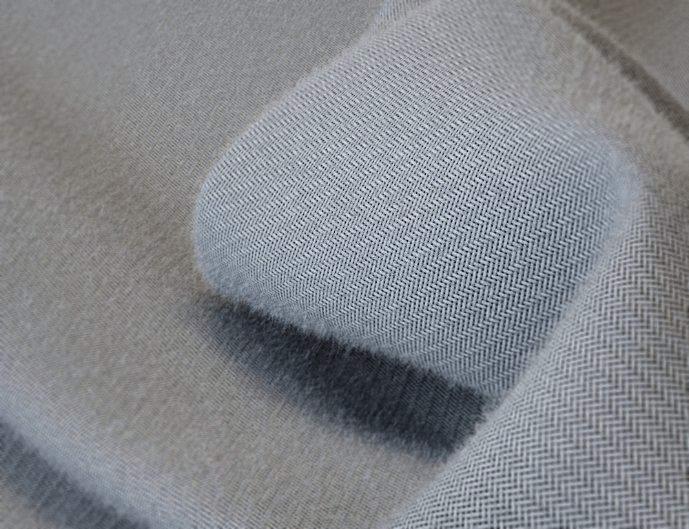
Synthetic Materials
What is softer than polyester? While modern polyester has improved significantly, natural alternatives like bamboo, cotton, and Tencel typically feel softer and breathe better than standard polyester.
Problematic synthetics include:
- Acrylic: Can cause static and trap heat
- Nylon: Poor breathability, can cause overheating
- Standard polyester: Traps moisture and heat
Treated Natural Fibers
Even natural fabrics can be problematic if heavily treated:
- Conventional wool: Coarse fibers can irritate skin
- Chemically treated cotton: May contain residual processing chemicals
- Dyed fabrics: Especially those labeled “wash separately”
Warning Signs in Clothing Labels
Avoid garments with these descriptors:
- Wrinkle-free or stain-resistant: Likely contains formaldehyde
- Antimicrobial treated: May contain harsh biocides
- Flame retardant: Contains chemical treatments
- Wash separately: Indicates unstable dyes
Choosing the Right Fit for Sensitive Skin
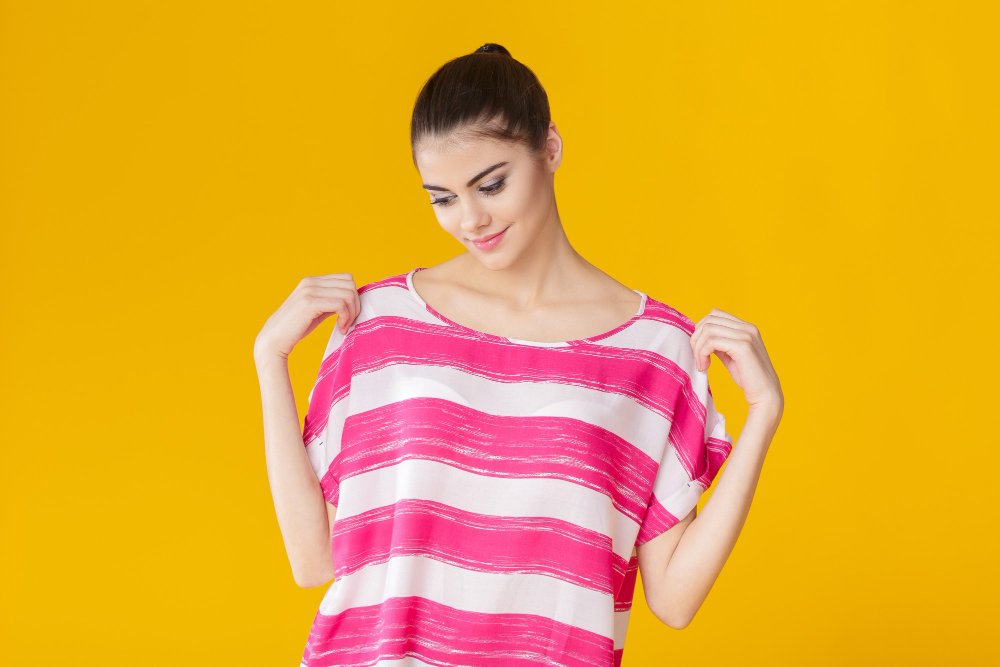
Fit Guidelines
Loose vs. Tight Clothing Dermatologists recommend slightly loose-fitting clothes to prevent friction and allow air circulation. Tight clothing can cause:
- Increased friction and irritation
- Trapped moisture and heat
- Pressure marks from elastic bands
Seam Considerations Look for:
- Flat seams: Reduce friction points
- French seams: Enclose raw edges completely
- Tagless designs: Eliminate irritating labels
Care and Maintenance for Soft Fabrics
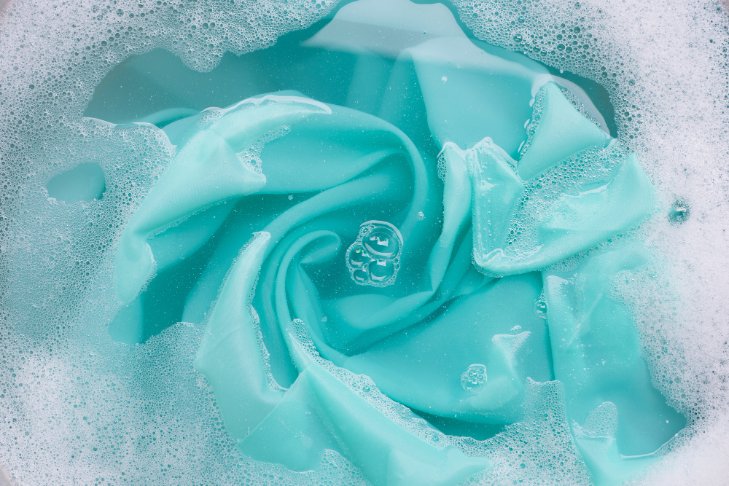
Washing Guidelines
Pre-Washing New Clothes Always wash new garments before wearing to remove:
- Manufacturing chemicals
- Excess dyes
- Sizing treatments
- Formaldehyde residues
Gentle Washing Techniques
- Use fragrance-free, hypoallergenic detergents
- Wash in cool or lukewarm water
- Add 1 cup baking soda to balance pH
- Use white vinegar (½ cup) in rinse cycle to remove soap residue
Fabric Softening Methods
Natural Alternatives to Chemical Softeners
- Wool dryer balls: Naturally soften fabrics
- White vinegar: Removes detergent buildup
- Baking soda: Balances water pH for softer results
What naturally softens fabric? Time and gentle washing naturally soften most fabrics. Linen, in particular, becomes increasingly soft with each wash as the fibers break down slightly and become more flexible.
Special Considerations by Fabric Type
Understanding Different Soft Materials
What are 10 soft materials?
- Organic cotton: Natural, breathable, improves with washing
- Bamboo: Silky feel, antimicrobial properties
- Tencel/Lyocell: Eco-friendly, excellent moisture management
- Mulberry silk: Luxurious, temperature-regulating
- Merino wool: Fine fibers, natural temperature control
- Modal: Smooth, durable, colorfast
- Cashmere: Ultra-fine goat hair, exceptionally soft
- Alpaca: Hypoallergenic, softer than wool
- Microfiber polyester: Modern synthetics with soft hand-feel
- Hemp: Gets softer with age, highly durable
Premium Soft Fabrics
What is the softest most expensive fabric? Vicuña wool, harvested from South American vicuña animals, represents the ultimate in soft luxury fabrics. However, for practical purposes, high-quality cashmere and mulberry silk offer exceptional softness at more accessible price points.
What fabric is softer than cashmere? Very few natural fabrics exceed cashmere’s softness. Vicuña and some ultra-fine merino wools (under 15 microns) can match or exceed cashmere’s feel, while some modern Tencel fabrics offer comparable softness with better durability.
Shopping Guide for Sensitive Skin

Fabric Selection Checklist
When shopping for sensitive skin-friendly clothing:
✓ Check fiber content: Look for 100% natural fibers or certified blends
✓ Verify certifications: OEKO-TEX, GOTS, or organic labels
✓ Feel the fabric: Test for smoothness and flexibility
✓ Read care labels: Avoid chemical treatments
✓ Consider the source: Research brand commitments to safe practices
Brand Recommendations
Look for brands that specialize in sensitive skin clothing:
- Companies with OEKO-TEX certified products
- Organic cotton specialists
- Brands with National Eczema Association Seal of Acceptance
- Manufacturers using GOTS-certified materials
Seasonal Considerations
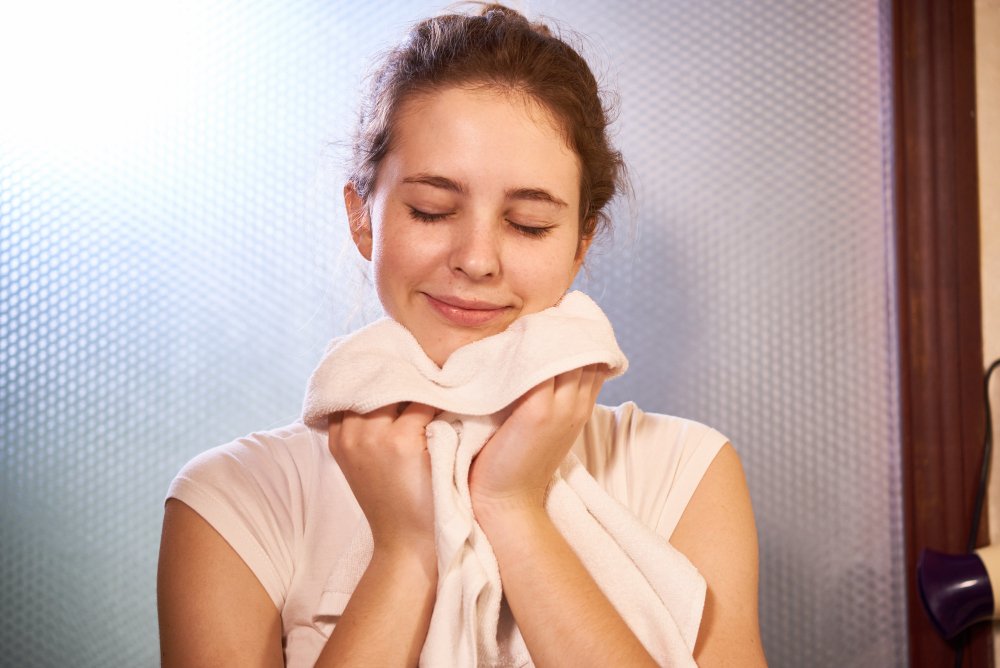
Summer Fabrics
What fabric is soft and fluffy? For warm weather, prioritize breathable softness:
- Linen: Lightweight, gets softer with washing
- Cotton gauze: Open weave for maximum airflow
- Bamboo knits: Moisture-wicking with silk-like feel
Learn more about summer fabrics for hot weather comfort.
Winter Softness
What is the soft smooth fabric called? For colder months, consider:
- Merino wool: Natural insulation without bulk
- Cashmere: Ultimate luxury and warmth
- Flannel: Brushed cotton for cozy softness
Explore our guide to winter fabrics for cold weather comfort.
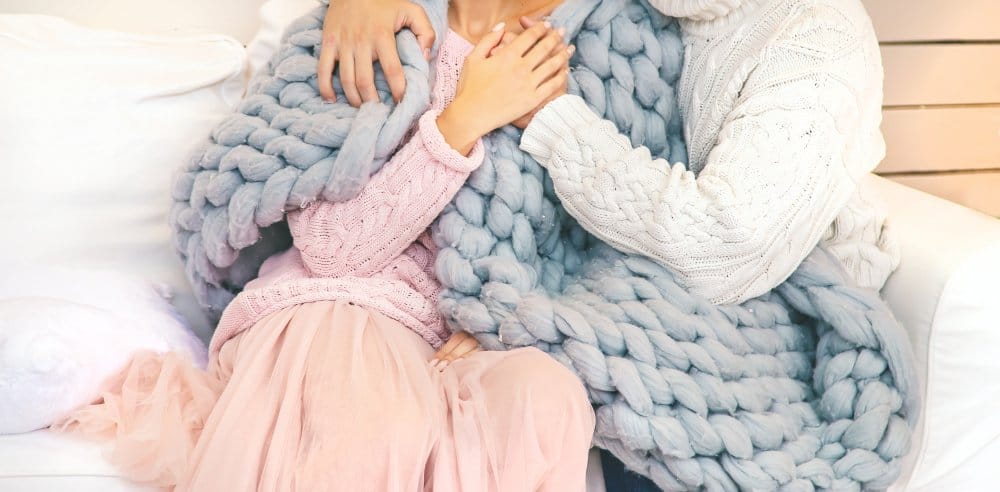
Specialized Applications
Baby and Children’s Clothing
For the most sensitive skin, baby clothing requires extra attention:
- Organic cotton only: No chemical treatments
- Pre-washed items: Removes manufacturing residues
- Flat seams: Prevents irritation
- Natural dyes: Avoid synthetic colorants
Read our comprehensive guide on choosing hypoallergenic clothing for babies and best fabrics for newborn clothing.
Athletic and Active Wear
What is the softest stretch fabric? For active pursuits, look for:
- Merino wool blends: Natural odor resistance
- Tencel-polyester combinations: Moisture management with softness
- Modal-elastane blends: Stretch without synthetic harshness
Advanced Care Techniques
Extending Fabric Softness
Does Egyptian cotton get softer as you wash it? Yes, high-quality cotton fabrics, particularly Egyptian and Pima cotton, actually improve with washing. The long fibers relax and become more flexible over time.
Maintenance tips:
- Use gentle, natural detergents
- Avoid fabric softeners (they can build up)
- Air dry when possible to preserve fiber integrity
- Store properly to prevent fiber damage
Troubleshooting Fabric Issues
What fabric gets softer as you wash it? Several fabrics improve with washing:
- Hemp: Starts stiff but becomes incredibly soft
- Linen: Relaxes and softens significantly
- High-quality cotton: Long fibers become more supple
- Bamboo: Maintains softness while becoming more flexible
Professional Recommendations
Dermatologist Guidelines
Healthcare professionals commonly recommend 100% cotton as the most skin-friendly textile for clothing, especially for eczema sufferers, because it breathes, absorbs sweat, and is easily washable.
Medical professionals also recommend:
- Organic fibers to minimize chemical exposure
- Loose-fitting garments to prevent friction
- Pre-washing all new clothing items
When to Consult a Professional
See a dermatologist if you experience:
- Persistent rashes despite fabric changes
- Severe reactions to multiple fabric types
- Unexplained skin irritation
- Symptoms that worsen over time
Fabric Comparison Chart
| Fabric Type | Softness Rating | Breathability | Hypoallergenic | Durability | Best For |
|---|---|---|---|---|---|
| Organic Cotton | 8/10 | Excellent | Yes | Good | Daily wear, sensitive skin |
| Bamboo | 9/10 | Excellent | Yes | Good | Active wear, hot climates |
| Tencel | 9/10 | Excellent | Yes | Excellent | All-purpose, eco-conscious |
| Silk | 10/10 | Good | Yes | Fair | Luxury, temperature regulation |
| Merino Wool | 8/10 | Excellent | Mostly | Excellent | Cold weather, active wear |
| Modal | 8/10 | Good | Yes | Excellent | Undergarments, blend component |
Future of Soft Fabrics
Emerging Technologies
Innovative Fiber Development
- Lab-grown materials: Biofabricated fibers without environmental impact
- Recycled luxury fibers: Sustainable versions of premium materials
- Smart fabrics: Materials that adapt to body temperature and moisture
Advanced Processing Techniques
- Enzyme treatments: Create softness without chemicals
- Plasma treatments: Modify surface properties for enhanced comfort
- Nano-finishing: Microscopic treatments for improved performance
Quick Reference Guide
Emergency Fabric Reactions
If you experience sudden fabric-related irritation:
- Remove the garment immediately
- Rinse affected skin with cool water
- Apply a gentle, fragrance-free moisturizer
- Avoid scratching or rubbing the area
- Consult a healthcare provider if symptoms persist
Travel-Friendly Fabric Tips
When traveling:
- Pack clothing made from proven safe fabrics
- Bring your own detergent for washing
- Research local fabric standards and certifications
- Consider packing extra cotton undergarments
Frequently Asked Questions
What is the softest fabric material?
Tencel (lyocell) and high-quality mulberry silk compete for the title of softest fabric. Both offer exceptional smoothness and comfort, with Tencel being more sustainable and silk offering luxury appeal.
What is the really soft fabric called?
The term “super soft fabric” often refers to microfiber polyester, modal, or specially treated cotton. In technical terms, the softest natural fabric is typically vicuña wool, while the softest readily available option is often high-grade Tencel or bamboo.
What is softer than silk?
Very few materials exceed silk’s natural softness. Vicuña wool and some ultra-fine cashmere can feel comparable, while modern Tencel fabrics sometimes feel smoother due to their consistent fiber structure.
What is the softest fabric against skin?
For direct skin contact, organic cotton jersey, bamboo knits, and Tencel fabrics rank highest. These materials combine softness with breathability and hypoallergenic properties essential for sensitive skin.
What is the softest plush fabric?
Minky fabric, made from 100% polyester microfiber, creates the softest plush texture. For natural alternatives, brushed organic cotton flannel or combed cotton terry provide plush softness with better breathability.
What is a soft stretchy fabric called?
Modal-spandex blends, bamboo-elastane combinations, and cotton-lycra fabrics provide soft stretch. Jersey knits made from these materials offer the ultimate combination of softness and flexibility.
What is the softest upholstery fabric?
Velvet, particularly cotton or silk velvet, provides the softest upholstery option. Microfiber suede offers a synthetic alternative that’s easier to maintain while remaining very soft.
What is super soft fabric?
“Super soft” typically describes fabrics that have undergone special treatments like enzyme washing, sand washing, or brushing to enhance their surface texture. Modal, micro modal, and high-grade bamboo fabrics often carry this designation.
Medical References and Expert Sources
This comprehensive guide incorporates recommendations from leading dermatological organizations and medical institutions to ensure accuracy and reliability:
- National Eczema Association – Eczema product safety guidelines and seal of acceptance criteria
- DermNet New Zealand – Peer-reviewed dermatological research on textile contact dermatitis
- OEKO-TEX Association – International textile safety standards and certification processes
- Medical News Today – Dermatologist-reviewed fabric recommendations for sensitive skin conditions
- Baptist Health System – Medical professional guidelines for fabric selection
Always consult with qualified healthcare providers for persistent skin conditions, severe sensitivities, or unexplained reactions to fabrics.
Conclusion
Choosing the right fabric for sensitive skin involves understanding both the material properties and your individual needs. The softest, most skin-friendly fabrics combine natural fibers, minimal chemical treatments, and proper certifications to ensure both comfort and safety.
Key Takeaways
For Everyday Comfort:
- Organic cotton remains the gold standard for reliability and safety
- Bamboo offers superior moisture management with silk-like softness
- Tencel provides the best balance of sustainability and performance
For Sensitive Skin Conditions:
- Always choose certified organic or OEKO-TEX approved fabrics
- Avoid clothing with formaldehyde treatments or unstable dyes
- Pre-wash all new garments to remove manufacturing chemicals
For Long-term Wardrobe Planning:
- Invest in quality natural fibers that improve with age
- Consider fabric blends that combine the best properties of multiple materials
- Build a core wardrobe around proven skin-friendly options
Final Recommendations:
- Start with certified organic cotton for your essential wardrobe pieces
- Experiment with bamboo and Tencel for enhanced comfort and performance
- Pay attention to fabric treatments and choose minimal processing when possible
- Maintain proper fabric care to preserve softness and extend garment life
- Consult healthcare providers for persistent skin issues or severe sensitivities
Remember that the softest fabric for your skin is ultimately the one that keeps you comfortable, healthy, and confident. By understanding fabric properties, chemical treatments, and certification standards, you can make informed choices that support both your skin health and personal comfort preferences.
Whether you’re dealing with eczema, contact allergies, or simply want the most comfortable clothing possible, the right fabric choice can significantly improve your quality of life. Take time to research brands, read labels carefully, and don’t hesitate to invest in quality materials that will serve you well for years to come.
For more information on fabric care and clothing choices, explore our guides on cotton care, natural vs synthetic fabrics, and how to choose safe, non-toxic baby clothes.

